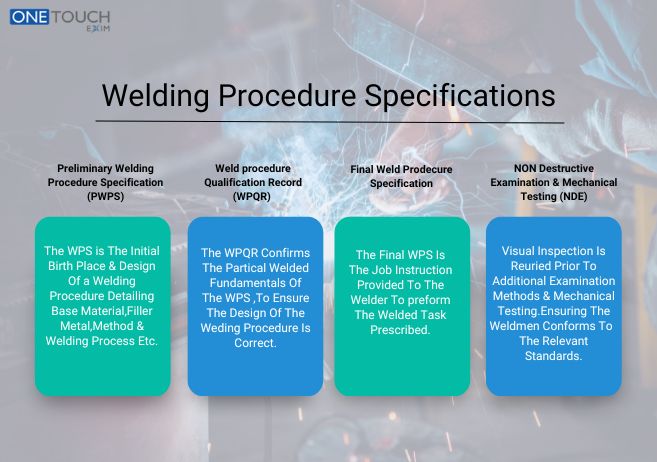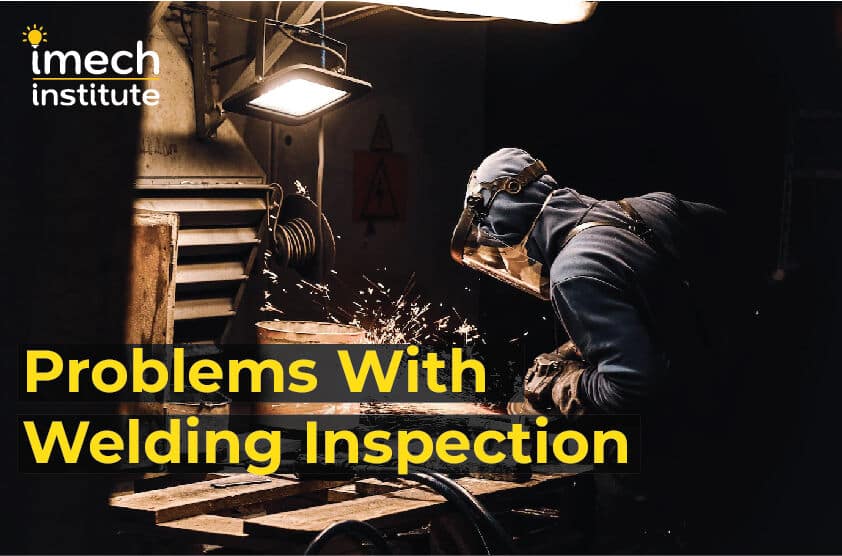The Ultimate Overview to Welding Inspection Racine for Industrial Standards
The Ultimate Overview to Welding Inspection Racine for Industrial Standards
Blog Article
Cutting-edge Approaches to Fillet Weld Inspection and Testing: Enhancing Weld High Quality and Conformity Specifications
In the world of welding, the top quality and honesty of fillet welds play a critical role in ensuring the structural soundness and reliability of various industrial components. With the constant drive for boosted performance and conformity with rigid requirements, the exploration of ingenious methods to fillet weld evaluation and testing has come to be essential. As industries advance, the typical approaches may no longer be enough in meeting the needs of modern-day welding applications. By accepting advanced technologies and techniques, a brand-new horizon of opportunities arises in the world of weld high quality analysis and adherence to conformity requirements.
Advanced Non-Destructive Screening Techniques
Utilizing advanced technologies, progressed non-destructive screening techniques play a crucial function in making certain the stability and quality of fillet welds. These techniques, such as phased selection ultrasonic testing (PAUT) and magnetic bit screening (MPT), offer thorough insights into the weld's inner structure without triggering any kind of damage to the product. PAUT, as an example, utilizes several ultrasonic components to inspect the weld from different angles, giving an extensive visualization of possible defects like lack of combination or splits.
By using these innovative non-destructive screening strategies, weld assessors can precisely examine the high quality of fillet welds, guaranteeing compliance with sector criteria and guidelines. The capability to discover imperfections early on not just improves weld high quality but additionally stops expensive rework or failures in architectural stability, underlining the significance of these cutting-edge screening methods in welding inspections.
Robotics and Automation in Examination
The assimilation of robotics and automation has revolutionized the examination process for fillet welds, enhancing effectiveness and accuracy in top quality evaluation. Robotics offer specific control and repeatability in checking welds, guaranteeing reputable and consistent outcomes. Automated systems can be set to comply with certain evaluation paths, making sure comprehensive coverage of welds and reducing the risk of human error.
Robot evaluation systems outfitted with sophisticated sensing units can spot and gauge weld features with high precision, giving detailed data for analysis. These systems can recognize defects such as fractures, absence of fusion, and porosity, allowing punctual corrective actions to be taken. Furthermore, robotics and automation enable real-time data collection and analysis, offering immediate comments to drivers and facilitating quick decision-making processes.
In addition, the use of robotics and automation in fillet weld assessment boosts overall productivity by decreasing examination times and raising inspection throughput. By improving the assessment process, makers can make sure weld top quality and conformity criteria are met efficiently, ultimately resulting in cost savings and enhanced item quality.
Utilizing Expert System for Analysis
Expert system plays a pivotal role in enhancing the efficiency and accuracy of analysis in fillet weld assessment processes. By utilizing the power of AI, examiners can improve the analysis of weld quality and conformity criteria, bring about a lot more exact and trusted outcomes. AI algorithms can rapidly refine substantial quantities of data from weld inspections, detecting issues or incongruities that might be challenging to relate to the nude eye. This sophisticated technology enables real-time surveillance of weld high quality, permitting prompt restorative activities to be taken if any kind of problems are found.
Moreover, AI systems can discover from previous evaluation data, constantly enhancing their capacity to recognize potential flaws and deviations in fillet welds. This adaptive discovering capability enhances the total high quality control procedure, reducing the possibility of human mistake and making certain that welds meet the needed requirements. By incorporating expert system into fillet weld analysis, markets can accomplish greater degrees of performance, uniformity, and conformity in their inspection methods.
Portable Equipment for On-Site Assessment
 Enhancing field examination effectiveness, the fostering of portable devices changes on-site assessment processes for fillet welds. These tools supply versatility and comfort, permitting assessors to conduct comprehensive assessments in different places, consisting of remote or tough settings. Mobile devices such as ultrasonic screening tools, magnetic particle inspection equipment, and digital radiography systems supply real-time information and high-resolution imaging abilities, allowing fast decision-making and instant feedback on weld top quality.
Enhancing field examination effectiveness, the fostering of portable devices changes on-site assessment processes for fillet welds. These tools supply versatility and comfort, permitting assessors to conduct comprehensive assessments in different places, consisting of remote or tough settings. Mobile devices such as ultrasonic screening tools, magnetic particle inspection equipment, and digital radiography systems supply real-time information and high-resolution imaging abilities, allowing fast decision-making and instant feedback on weld top quality.One significant benefit of mobile tools is their ability to improve assessment treatments, minimizing downtime and improving general efficiency. Inspectors can easily transport these devices to various task sites, eliminating the requirement for carrying heavy machinery or parts to off-site centers. Furthermore, the portability of these devices advertises cost-effectiveness by reducing transportation expenditures and speeding up evaluation timelines.
Furthermore, the usage of portable devices for on-site assessment promotes aggressive high quality control steps, as assessors can immediately identify and address any type of potential welding flaws or inconsistencies. By including these ingenious technologies right into on-site inspection techniques, welding professionals can make certain compliance with sector requirements and boost weld quality, inevitably causing improved architectural integrity and safety and security in various welding applications.
Combination of Data Administration Equipment
Having maximized on-site inspection processes through the use of portable tools, the following stage involves the smooth assimilation of data administration systems to better enhance effectiveness and information evaluation abilities in fillet weld inspection and testing. Welding Inspection Racine. By integrating information monitoring systems right into the evaluation process, companies can simplify information collection, storage, and analysis. This combination enables real-time monitoring of weld high quality, instant recognition of issues, and prompt decision-making to rectify any type of problems that may develop throughout the examination procedure
The integration of information management systems allows seamless communication between different stakeholders included in the assessment procedure, promoting partnership and enhancing overall top quality control steps. Ultimately, the combination of information monitoring systems offers to boost the criteria of fillet weld inspection and screening, ensuring conformity with sector policies and boosting weld quality.
Final Thought
Finally, ingenious approaches to fillet weld evaluation and screening have actually significantly improved weld top quality and conformity standards. Advanced non-destructive testing approaches, robotics, automation, expert system, informative post mobile devices, and information management systems have revolutionized the method weld examinations are conducted. By utilizing these innovations, markets can make certain that welds meet the required high quality requirements and laws, inevitably improving overall efficiency and safety and security in welding processes.

By utilizing these sophisticated non-destructive testing methods, weld examiners can precisely evaluate the high quality of browse this site fillet welds, making sure conformity with market requirements and policies. Mobile devices such as ultrasonic screening gadgets, magnetic bit evaluation equipment, and digital radiography systems provide real-time information and high-resolution imaging capacities, making it possible for fast decision-making and instant comments on weld quality.
Having actually maximized on-site examination procedures with the usage of portable devices, the following phase involves the smooth combination of data management click here to find out more systems to better boost performance and data evaluation capacities in fillet weld examination and testing (Welding Inspection Racine). Ultimately, the assimilation of information management systems offers to raise the standards of fillet weld examination and screening, ensuring conformity with market regulations and boosting weld high quality
 In final thought, innovative approaches to fillet weld examination and testing have dramatically improved weld quality and conformity requirements.
In final thought, innovative approaches to fillet weld examination and testing have dramatically improved weld quality and conformity requirements.Report this page